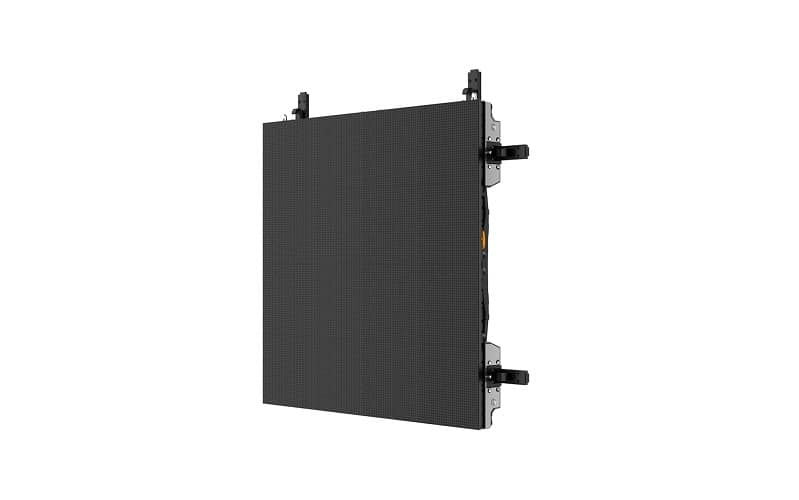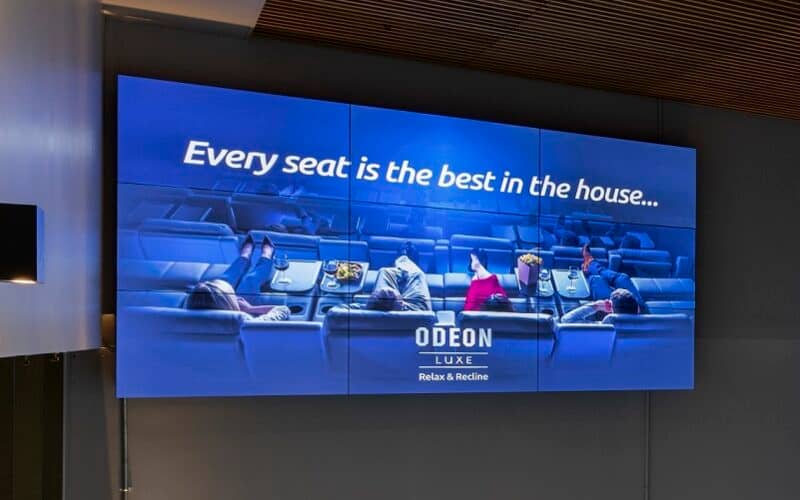LED Walls Vs Projectors
Want to create a large, eye-catching display? We’ll walk you through the considerations & costs for LED walls versus projectors.
Both LED walls and projectors offer high-resolution, high-quality imagery that can be updated in real-time, including the option of full-motion animation and dynamic graphics. And both can be used to create displays that measure in feet or metres rather than inches.
So which should you use and when? We’ll help you understand the both types of large display and walk you through the key considerations you need to bear in mind to help you pick the right option.
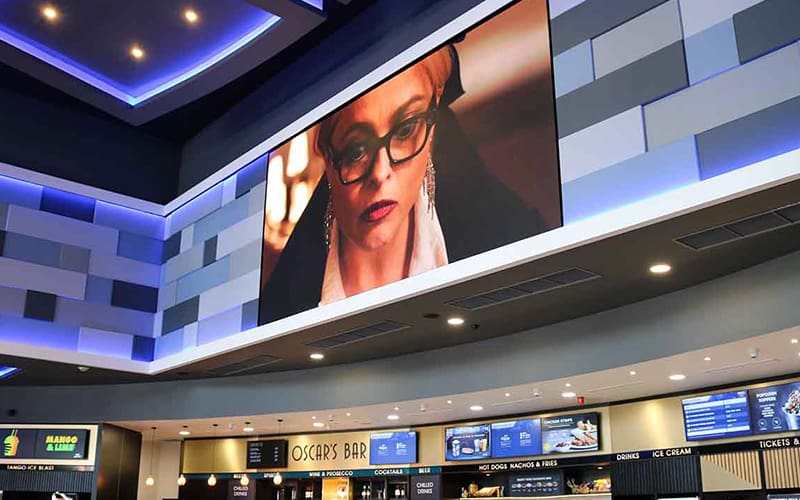
What are LED walls?
Rather than having a single, enclosed screen, LED walls consist of many small tiles fitted with LEDs (light-emitting diodes). These individual LED panels are square or rectangular and slot neatly together. These are mounted on top of a framework which is (usually) attached to a wall.
As with most digital signage, a small computer called a media player is used alongside content management software to dictate what will appear on the display. However, with LED walls, another device called a controller is also required to convert the information from the media player into data that the LED wall components can recognise.
What are projectors/projection displays?
There are two types of projector – traditional and laser. Traditional projectors use a powerful light that is filtered into colours which shines onto a surface, showing the relevant imagery. Laser projectors are more energy efficient and have three lasers for each primary colour, and a system of mirrors, filters, and lenses to project the imagery onto a surface.
Because projectors use light to create a display, they’re often not suitable for well-lit places, as the imagery will be harder to see and look ‘washed out’.
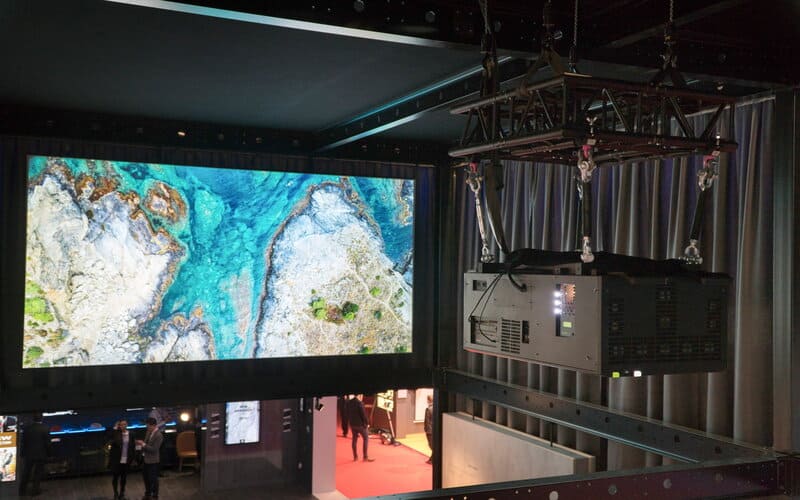
The benefits of LED walls vs projectors
We’ve already touched on some of the merits of LED walls versus projectors, but let’s put them head-to-head…
Display size/dimensions
Both LED walls and projectors offer a degree of flexibility with regards to the size of your display they can create.
Because there is a limited amount of light they can emit, projectors have a limited amount of space they can project onto. Subsequently, a large display will require a large projector or multiple projectors to achieve the desired dimensions and resolution. When multiple projectors are used, the image has to be “stitched” together using Edge blend technology which is quite expensive and if any element changes due to movement etc. they’ll need fully recalibrating. If you’re using a screen with a projector to achieve a stronger image, the screen is likely to be fixed in its size and shape.
LED walls can be made using any number of tiles, so your display can have the size, dimensions and aspect ratio you want, making them perfect for unusual room/building shapes.
Energy efficiency
Projector lamps are big, bright and quite expensive, and performance on energy efficiency varies, but isn’t always great.
LED walls are extremely efficient – even more efficient than a traditional LCD or LED screen of comparable size – and in addition to using far less energy, their lifespan is typically twice that of equivalent displays.
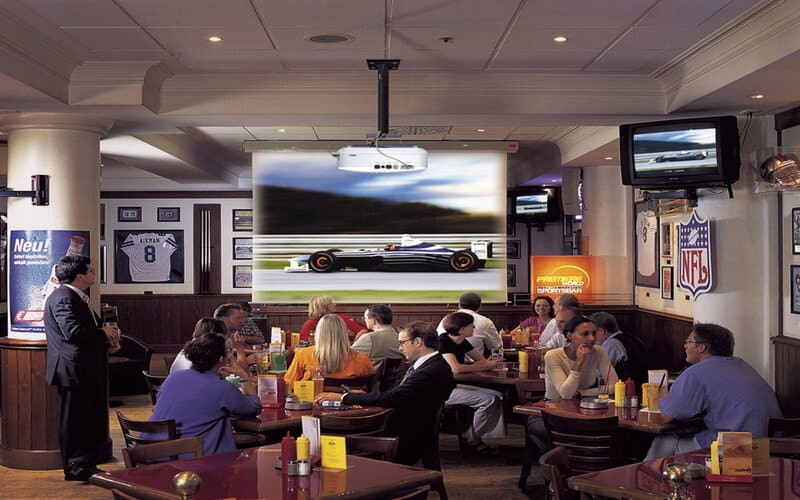
Maintenance and repairs
The modular design of LED walls allows for easy replacement of individual panels. If one of these tiles develops a fault, it can be replaced easily, at low cost, without disturbing the rest of the LED wall – making LED video walls much easier to maintain over the long term.
This is a distinct advantage over projectors, which often require components, such as fans, bulbs, and lenses, to be replaced. If a fault develops with a projector, it is cannot be used. If one tile develops a fault in an LED wall display, it will continue to work – and because of its small size (relative to the overall display) is often not easily noticeable.
Longevity-wise, LED walls typically have a lifespan of up to 10 years, while the highest warranty you’ll find on even the highest quality projectors is only three years.
Vividness and impact
When considering whether to use a projector or an LED wall, it’s crucial to think about the impact and vividness of the display.
There are three key issues related to impact to consider when assessing whether a projector is the right option for you:
1. It’s difficult for projectors to produce highly saturated colours, particularly black, which can result in a washed-out appearance, unless you are in a dark room.
2. As the components in a projector get used they will lose their brightness over time, which can affect the impact of your visuals.
3. Being too close to a projected image will impact its clarity. Depending on the position of the projectors, you will also need an uninterrupted ‘line of sight’ for the beam to reach the screen or backdrop.
LED walls, on the other hand, are simpler. They require the right pixel pitch (this refers to the distance between LEDs on a tile, which come in different formats for different viewing distances), but they offer consistently good colour contrast and richness. For this reason, LED walls are an excellent choice for displays that require high-quality, impactful visuals.

Flexibility
Both LED walls and projectors offer flexibility in that they can both be used outdoors. Projectors can be used to create striking outdoor displays, but can appear washed out in sunlight and are best used at night, whereas LED walls are unaffected by the sun’s glare and can be used in any weather at any time of day.
Both can be used in spaces with unusual dimensions or on uneven surfaces. Projectors don’t necessarily need a completely flat, white surface for imagery to appear on (though this is advisable with traditional projectors), and LED walls can be flat or curved – concave or convex. This is because the LED panels are small and the framework need not be flat to hold them in place.
Both projectors and LED walls require the expertise of a specialist installer when being set up, though when it comes to portability, projectors have an advantage over LED walls as they are generally easier to move around. It is possible to move a flat LED wall, but this will need a longer set-up time than a projector.
Cost
Projectors are by far the most cost-effective way to create a large display, but this option is only feasible if the space is relatively dark and free of obstructions that could interfere with the projection, which restricts how many locations they can be used in. It’s also worth knowing that replacement parts for projectors (e.g. bulbs) aren’t cheap.
Whilst the cost of hardware for LED walls has come down considerably over the last five years, it’s still expensive to purchase. LED walls are also more expensive to install and operate than standard projectors, however this is generally balanced against the quality of imagery, their longevity, and reliability.
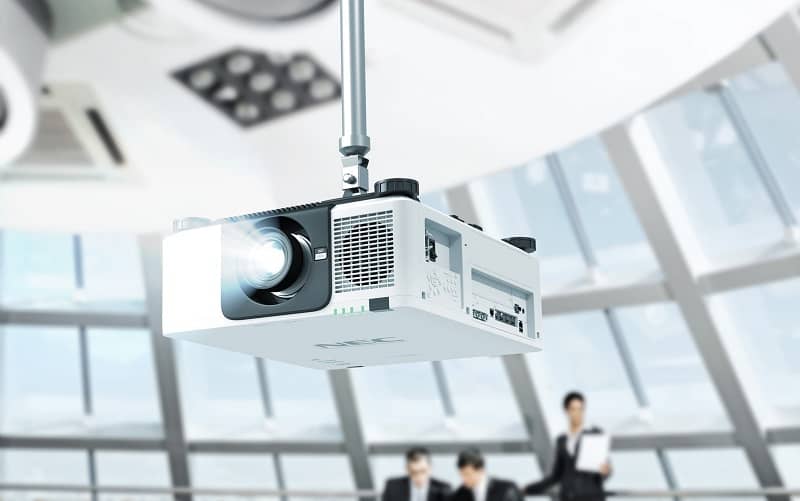
Conclusion
Projectors are be a cost-effective solution for three key types of situation:
- short-term displays in large, empty, and dark spaces (e.g. art galleries)
- positioned overhead in places where people will always be sitting down (e.g. in lecture theatres, seminar rooms) and only used for short periods of time
- outdoor projection mapping to create a spectacle at night (e.g. using a large building to project onto)
LED walls are the superior choice for most other scenarios. They’re eye-catching and easy to see from long distances away and up close. They’re also reliable and easy to maintain, with long-lasting hardware.
If you’re still not sure which option is right for you, get in touch as we can help you to understand and weigh up all the considerations so you get the perfect solution to meet your needs. Just get in touch and speak to our sales team.
NB: Saturn Visual Solutions can specify and install both projectors and LED walls.
More LED wall resources
Blog: LED walls vs video walls
Case study: Curved outdoor LED wall for ODEON West End
Case study: Curved indoor LED wall for SEAT high tech car showroom
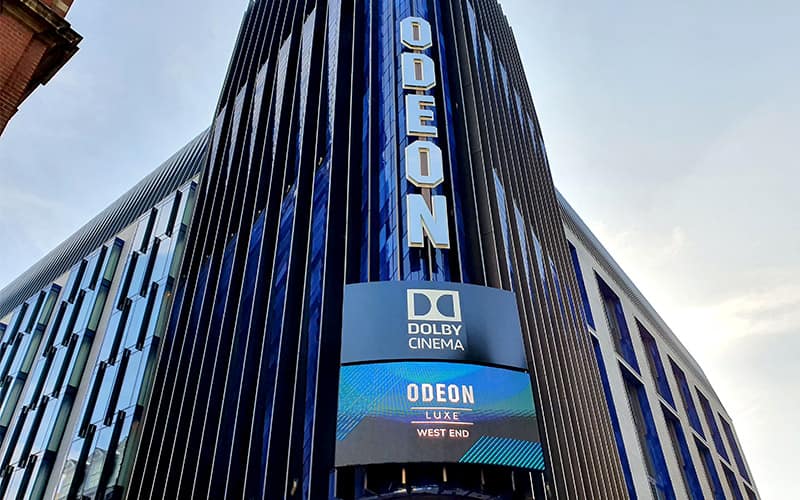
Ready to make an impact?
Get in touch now for competitive prices, good advice, & slick project delivery

